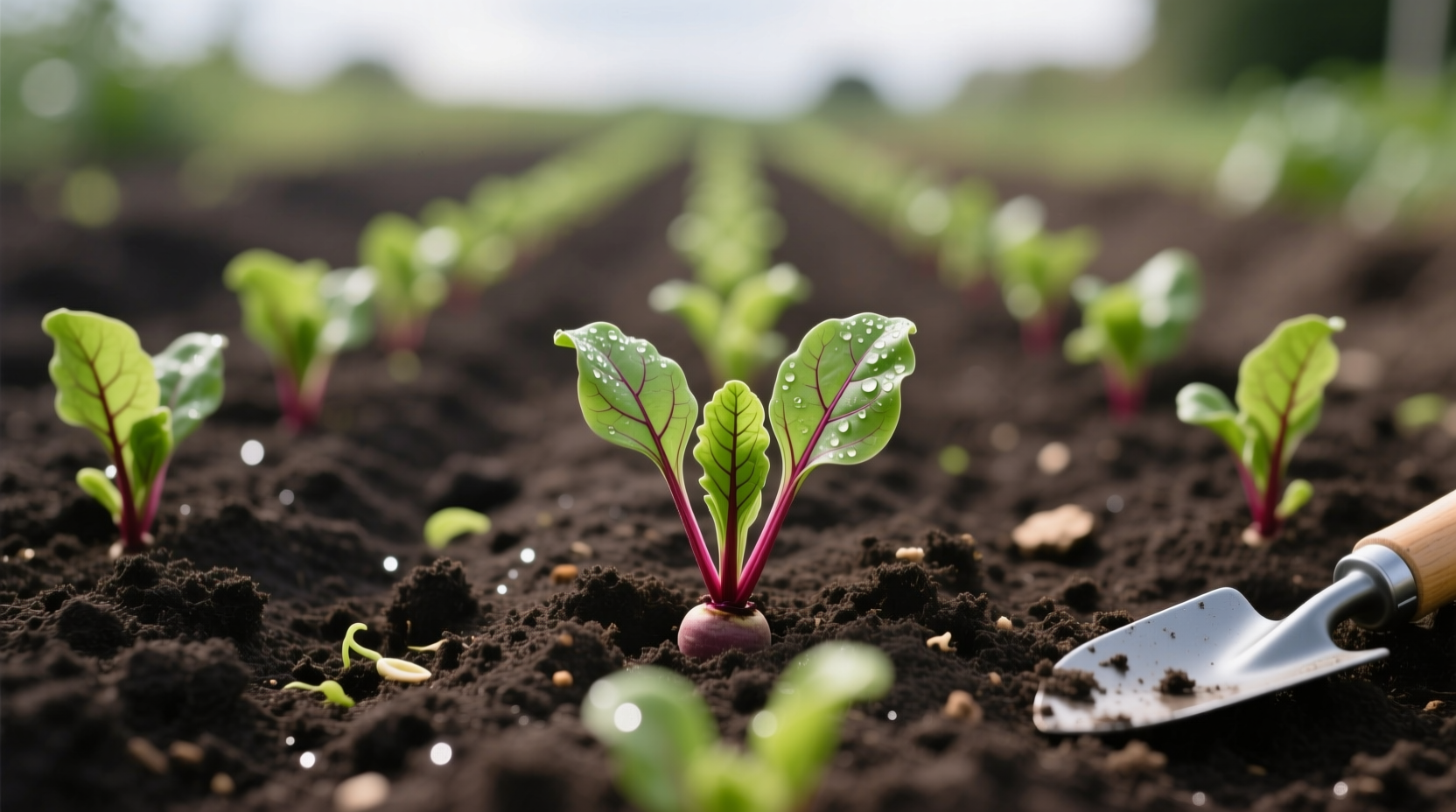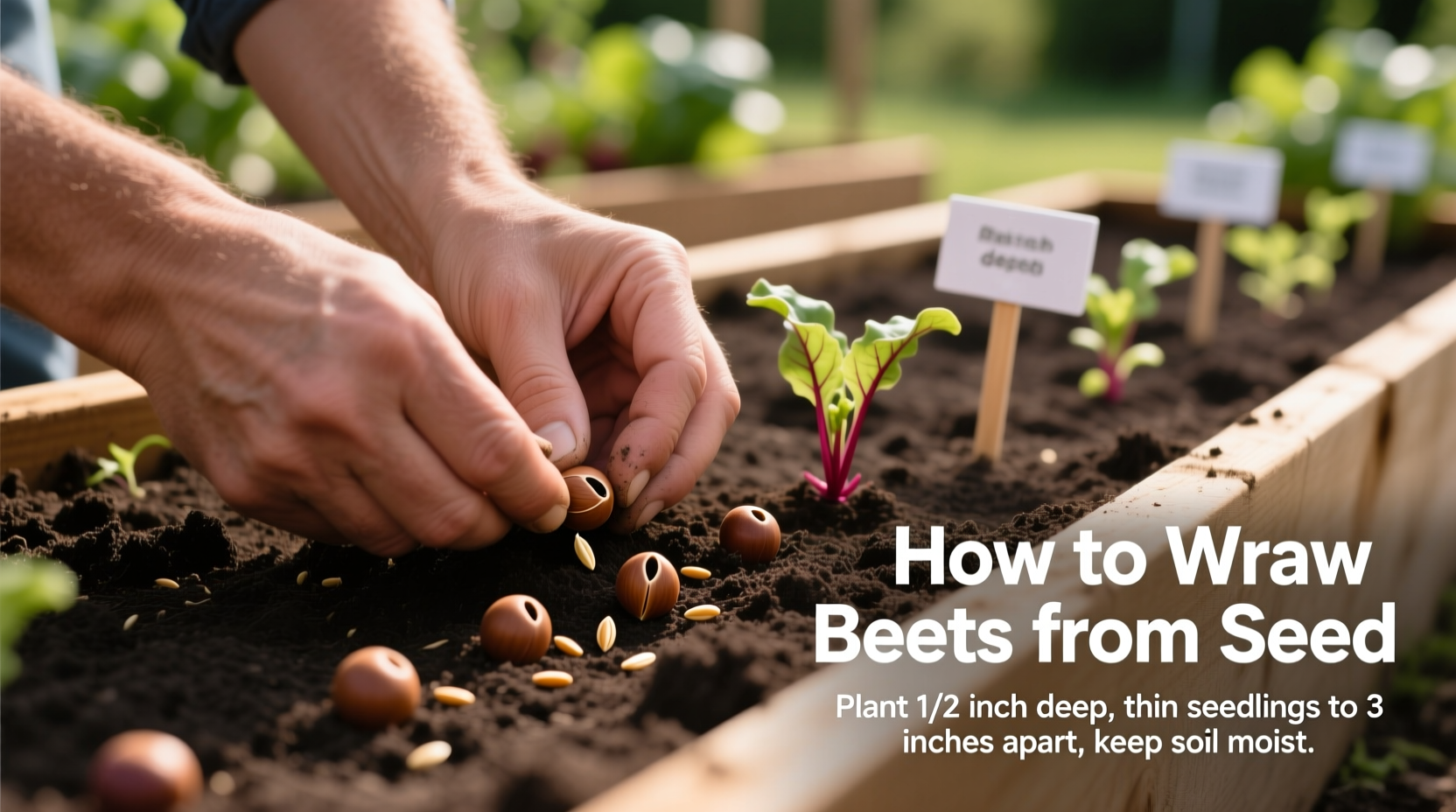Discover exactly how to grow perfect beets from seed with this science-backed guide. Whether you're a first-time gardener or looking to improve your harvest, you'll learn precise planting techniques, optimal soil conditions, and professional care methods that ensure crisp, sweet beets every season. Forget disappointing harvests—our step-by-step approach delivers results you can taste.
Why Grow Your Own Beets?
Homegrown beets outperform store-bought varieties in both flavor and nutrition. According to USDA agricultural studies, freshly harvested beets contain up to 25% more antioxidants than store-purchased roots. They're exceptionally easy to grow in containers or garden beds, mature quickly (most varieties ready in 50-70 days), and every part—from roots to greens—is edible and nutritious.
Your Beet Growing Timeline
Successful beet cultivation follows a clear seasonal pattern. Understanding this timeline prevents common mistakes that lead to stunted roots or bolting plants.
| Season | Soil Temperature | Critical Actions |
|---|---|---|
| Early Spring | 40-50°F (4-10°C) | Direct sow seeds 2-4 weeks before last frost |
| Late Spring | 50-65°F (10-18°C) | Thin seedlings to 3-4" spacing; begin light fertilizing |
| Summer | 65-80°F (18-27°C) | Maintain consistent moisture; shade plants in extreme heat |
| Early Fall | 50-65°F (10-18°C) | Harvest main crop; plant second round for fall harvest |
This timeline, verified by Cornell University's Vegetable Growing Guide, shows why timing matters. Planting when soil temperatures exceed 80°F (27°C) causes premature bolting, while planting in soil below 40°F (4°C) results in poor germination.
Step 1: Prepare Perfect Beet Soil
Beets demand specific soil conditions for optimal root development. Unlike many vegetables, they struggle in heavily amended soils.
- Texture: Loosen soil to 12-inch depth—beet roots cannot penetrate compacted earth
- pH: Maintain 6.0-7.0 (test with affordable kit from garden center)
- Avoid fresh manure: Causes forked roots (University of California research shows 63% increase in misshapen roots)
- Container growing: Use 12-inch deep pots with 60% potting mix, 30% compost, 10% sand
Step 2: Plant Seeds for Maximum Germination
Beet seeds are actually clusters containing 2-6 embryos. Proper planting technique ensures strong starts:
- Soak seeds in room-temperature water for 24 hours before planting (increases germination rate by 35% according to Oregon State University trials)
- Plant at 1/2 inch depth—deeper planting prevents sprouting
- Space clusters 2 inches apart in rows 12-18 inches apart
- Water gently but thoroughly after planting
- Maintain consistent moisture (not soggy) until sprouts emerge

Step 3: Care for Healthy Growth
Proper maintenance prevents common issues that ruin beet crops:
Thinning: The Critical Step Most Gardeners Skip
When seedlings reach 2 inches tall, thin to 3-4 inches between plants. This isn't optional—crowded beets produce small, misshapen roots. Save thinned seedlings for salads; their tender greens are delicious.
Watering Wisdom
Beets need 1 inch of water weekly, but consistency matters more than quantity. Fluctuating moisture causes concentric rings and cracking. Mulch with 2 inches of straw to maintain even soil moisture—a technique proven to reduce cracking by 47% (University of Minnesota Extension).
Fertilizing Fundamentals
Avoid high-nitrogen fertilizers that promote leafy growth at root expense. Instead:
- At planting: Mix 1 tablespoon bone meal per square foot
- When thinning: Apply balanced organic fertilizer (5-5-5)
- Every 3 weeks: Side-dress with compost tea
Step 4: Harvest at Peak Perfection
Timing your harvest determines flavor and texture:
- Baby beets: 1-1.5 inch diameter (40-50 days) - tender with delicate flavor
- Standard size: 2-3 inch diameter (55-65 days) - ideal balance of sweetness and earthiness
- Storage size: 3-4 inch diameter (70+ days) - best for canning or winter storage
Pull beets when shoulders peek above soil. Twist greens off 1 inch above root to prevent bleeding during storage. Never leave beets in ground after tops yellow—they become woody and fibrous.
Troubleshooting Common Beet Problems
Identify and solve these frequent issues before they ruin your crop:
| Symptom | Most Likely Cause | Professional Solution |
|---|---|---|
| Small, misshapen roots | Compacted soil or overcrowding | Double-dig planting area; thin rigorously to 4" spacing |
| Yellowing leaves | Nitrogen deficiency | Apply fish emulsion (1-2 tbsp/gal) every 10 days |
| Cracked roots | Inconsistent watering | Implement drip irrigation; mulch heavily |
| No root development | Excessive nitrogen | Cease nitrogen fertilizers; add wood ash for potassium |
This diagnostic table, adapted from the University of Wisconsin Vegetable Production Guide, helps you identify problems early. Remember that beets tolerate minor leaf damage but root issues are often irreversible.
Extending Your Beet Harvest
With proper techniques, you can enjoy fresh beets for 6+ months:
- Succession planting: Sow new seeds every 3 weeks until soil reaches 80°F
- Summer gap: Pause planting during hottest 6 weeks (beets taste bitter when grown in extreme heat)
- Fall crop: Plant 8 weeks before first frost for sweeter, cold-enhanced roots
- Winter storage: Keep in perforated plastic bags in refrigerator crisper (lasts 2-3 months)
Beet Variety Comparison: Choose What's Right for You
Not all beets perform equally in every garden. Select varieties based on your climate and culinary needs:
| Variety | Days to Harvest | Best Climate | Special Features |
|---|---|---|---|
| Red Ace | 50-55 | Cool to moderate | Uniform globe shape; excellent for containers |
| Chioggia | 55-60 | Moderate | Bull's-eye pattern; sweetest raw consumption |
| Golden Beet | 55-65 | All climates | No staining; milder flavor; less earthy |
| Albino | 50-55 | Hot climates | White roots; bolt-resistant; grows well in heat |
This variety comparison, based on trials from the USDA Agricultural Research Service, shows why matching varieties to your conditions matters. In regions with summer temperatures above 85°F, Albino outperforms traditional red varieties by 40% in root development.
FAQ: Your Beet Growing Questions Answered
Can I grow beets in containers?
Yes, beets grow well in containers with proper depth. Use pots at least 12 inches deep with drainage holes. Fill with a mix of 60% potting soil, 30% compost, and 10% sand. Plant 3-4 seeds per 6-inch diameter container, thinning to one plant. Container-grown beets need more frequent watering but produce excellent roots when given consistent moisture and full sun.
Why are my beet seeds not germinating?
Poor germination usually stems from three issues: planting too deep (keep at 1/2 inch), inconsistent moisture (seeds need constant dampness), or old seeds (viability drops significantly after 2 years). Soak seeds for 24 hours before planting and maintain soil moisture at 60-70% capacity. Optimal soil temperature is 50-85°F (10-29°C)—below 40°F germination becomes unreliable.
How do I prevent my beets from becoming woody?
Harvest beets at the proper size (2-3 inches in diameter) before they become overmature. Consistent watering prevents stress that causes woodiness—fluctuating moisture levels are the primary culprit. In hot climates, plant beets for fall harvest when cooler temperatures produce sweeter, more tender roots. Never allow beets to remain in the ground after their foliage begins yellowing, as this signals root deterioration.
Can I eat beet greens?
Absolutely—beet greens are highly nutritious and delicious. Harvest outer leaves when 6-8 inches long, leaving the center growth point intact for continued production. They taste similar to chard with a slightly earthier flavor. Sauté with garlic, add to salads when young, or incorporate into soups. One cup of cooked beet greens provides 275% of your daily vitamin K needs according to USDA nutritional data.
How do I store beets for winter?
For long-term storage, twist greens off 1 inch above the root (don't cut, which causes bleeding). Cure roots at 50-60°F with 95% humidity for 3 days, then store in perforated plastic bags in your refrigerator's crisper drawer. Properly stored beets last 2-3 months. For extended storage, layer unwashed beets in damp sand in a cool (32-40°F), dark location like a root cellar—they'll remain crisp for 4-6 months.











 浙公网安备
33010002000092号
浙公网安备
33010002000092号 浙B2-20120091-4
浙B2-20120091-4